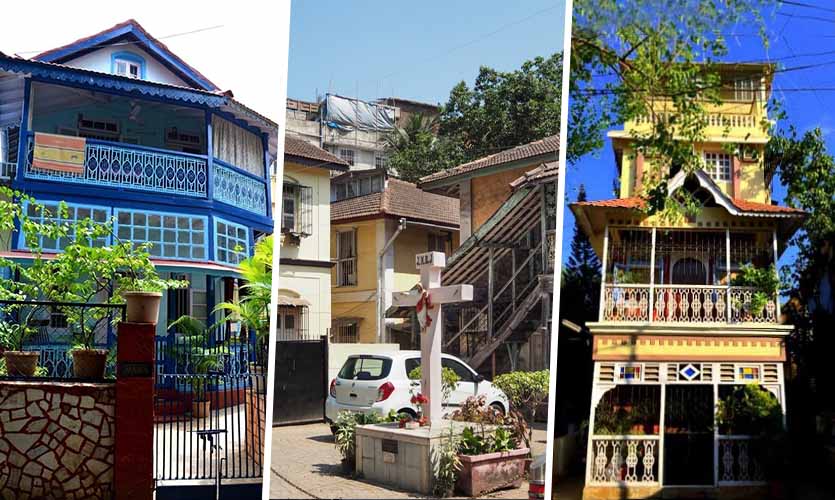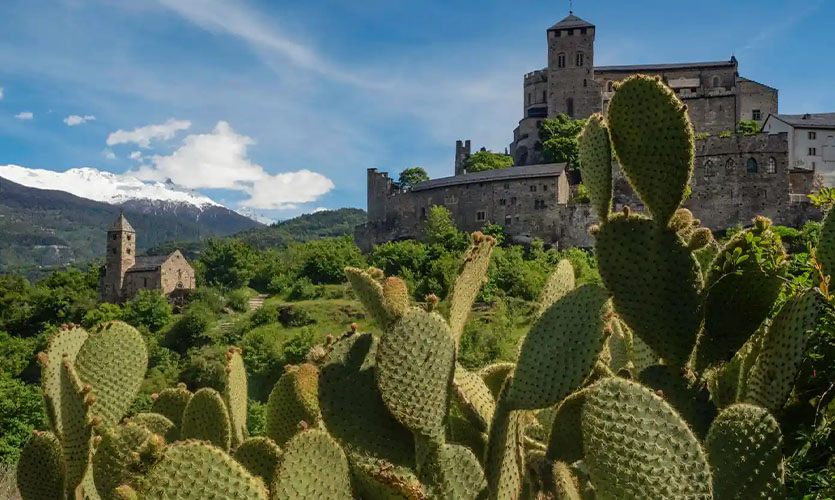Amidst the bustling streets of Bandra in Mumbai, the picturesque Ranwar is a refreshing slice of Indo-Portuguese architecture that breathes life into the city’s suburban heart.
A walk down its lanes coloured in vivid shades of blue and washes of carmine take us through the rich history of how this little pocket of Portuguese culture has transformed throughout the years.
If Bandra stands for celebrities, cafes, clubs and traffic, then the streets of Ranwar hum the liveliness of the agile cats, the architectural marvels of Catholic churches, resurrected shrines, and the European culture in the bricks of every house.
The neighbourhood houses around 400 residents in 42 homes that have been passed down from generation to generation, by the single-family East Indian community.
Such villages have been lost behind the grand Bandra promenade, much like we many of them to urbanisation. However, a scant number of villages like Ranwar have stuck their ground in the face of fading history in modern times.
Whose Bandra Is It?
The origin of this quaint village can be traced through the records kept at the St Andrews Church near Hill Road, Bandra. It takes us back to a time when Bandra was locally called ‘Bandora’ by the Portuguese who settled there in 1534. Coincidentally, Bandra also derives its name from the Persian and Arabic word ‘Bandar’, which means port. Ever since, Bandra was snatched by a slew of armies belonging to the British and the Marathas until India became independent in 1947.
The Portuguese Empire designed and built several chapels, oratories and churches in Bandra, one of the earliest being St Andrew’s Church, around 1575. Their Jesuit missionaries learned local languages and customs, and drew many Indian converts among the natives of the island to Western Christianity (Catholicism). Their descendants remained members of the six Catholic parish churches – Mount Carmel, St Peter’s, St Andrew’s, St Theresa’s, St Anne’s, and St Francis d’Assisi which occupies a four-square-kilometre area.
The renowned present-day Pali Hill stands as a living memory of the original ‘pakhadis’ or hamlets of Bandra that consisted of rice cultivators or ‘kunbis’, situated on what is called the ‘gaothan’ or village settlement with paddy fields. Rice, coconuts, onions, vegetables, and garden fruit were widely cultivated in the fields surrounding these villages.
Rice farmers, as was typical, would build their homes on decent elevations above their lush paddy fields to keep a watch on their crops.
Then a Gaothan, Today a Vibe
Years went by and the rice trade in Ranwar boomed. Soon development followed. Being closely located to the port that regulated vegetables to the mainland benefitted the village.
Some houses today are a living testimony to this era of expansion with timber construction and large balcões (entrance porches). They had roof canopies, creative designs, ornate fascia and artistic colour choices.
The houses dorned the street spine that opened up to narrow streets and form squares that gave it a unique streetscape. It fascinatingly reflected the way the people formed a close-knit community, and had shared experiences during festivals and other special celebrations.
There were a few wells in the village that were used for farming and recreational swimming. Interestingly enough, according to oral history, the villagers used them to hide their gold and other jewellery from Arab pirates who often attacked the coast.
The charm of this old, colonial style hamlet has a story hidden in every turn of its lanes. One such being Veronica Street in the heart of the village that has frozen a timeless Biblical Christian tale. The street was named after Saint Veronica, a woman who is believed to have seen Jesus carrying his cross to Calvary, where he was crucified, and give him her veil to wipe his forehead. As recounted in the tale, Jesus accepted her offering, held it to his face, and then returned it to her, who noticed that the veil now bore a miraculous impression of his face on it. This piece of cloth is renowned as the Veil of Veronica.
The Catholic influence on the village does not simply end there. According to local folk tales, many years ago, annual parades to commemorate Palm Sunday (which marks Jesus’ arrival into Jerusalem) passed through Veronica Street in Ranwar. Veronica was traditionally played by a young woman from the village.
Although Ranwar is famous for its Portuguese architecture and vibrant street art, the village also stands for the everlasting bond of the communities living there, dating back to the 1590s.
The Ranwar fund is a chit fund that was founded 150 years ago and is still active now, which is another cause for the community’s affinity. Even now, when the original financial goals of the funds are outdated, membership is full and frequently passed down as a legacy.
Recounting Ranwar’s cultural legacy would be incomplete without mentioning the formation of the Bandra Gymkhana in 1924, by some ardent ‘Ranwarites’. The club is famed for producing maestros in sports such as badminton, tennis, cricket, football, and hockey.
The villagers also had a literary club called ‘The Varsity Circle’, which was founded by certain Bandra locals. They organised debates, talks, and often published magazines that were popular even among outsiders. The Varsity Circle appeared to have fostered literary, acting, and public speaking skills among the partisans.
The residents routinely also come up with creative, group-based activities for preserving bonds from the past. During the feast of the Lady or Christmas, some of their cuisine pop-ups spring to life. Between the months of May and October, the villagers assemble in Ranwar Square each evening to recite the rosary.
Now, Ranwar has turned a leaf and is welcomed by the youth with a hint of gen-pop. Mapping the cinematic history of Bollywood, ‘The Bollywood Art Project’ has painted a plethora of murals on the haggard walls of Ranwar. While on a walk down the lanes, one is bound to be awestruck by the street art featuring a macho Amitabh Bachchan, the queen of dreams Rekha, and so on. The glamour and filmy side of Mumbai definitely rules this lost gem. Not only has the art restored the history of the village with a unique twist but has also introduced the unknown side of Ranwar to Mumbai.
Be it murals or European cafes, Ranwar is still a living and breathing token of Indo-Portuguese culture that will stay with us for years to come. Although as the new generation makes strides to keep the legacy going, the impending question of Ranwar’s existence does loom due to consistent urbanisation.










